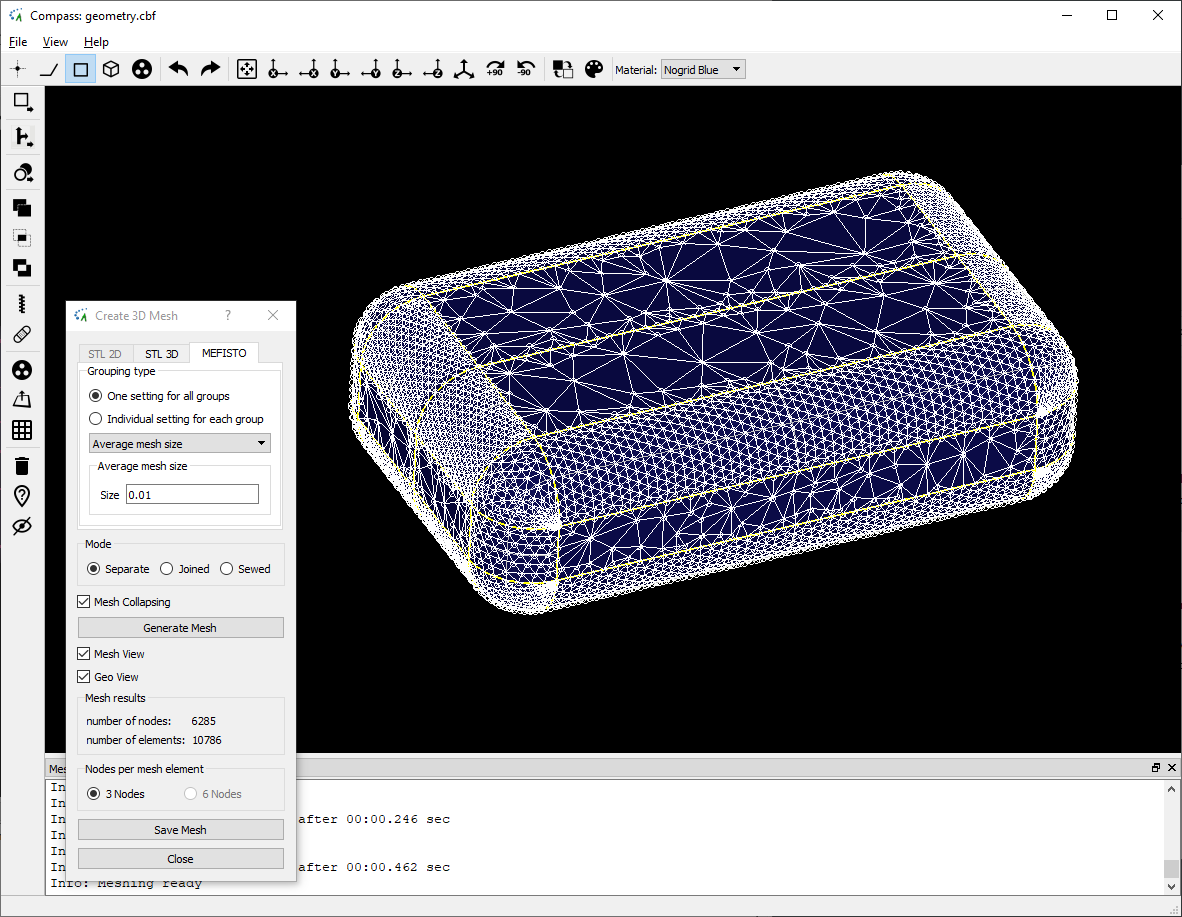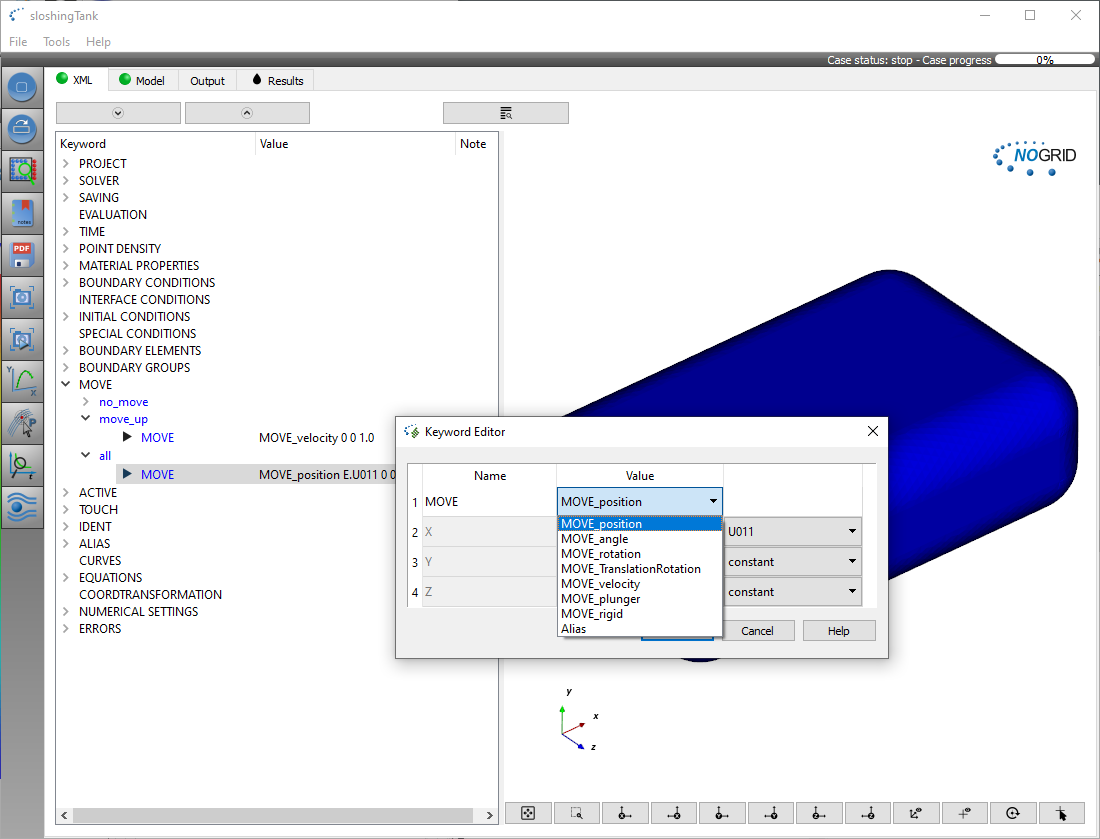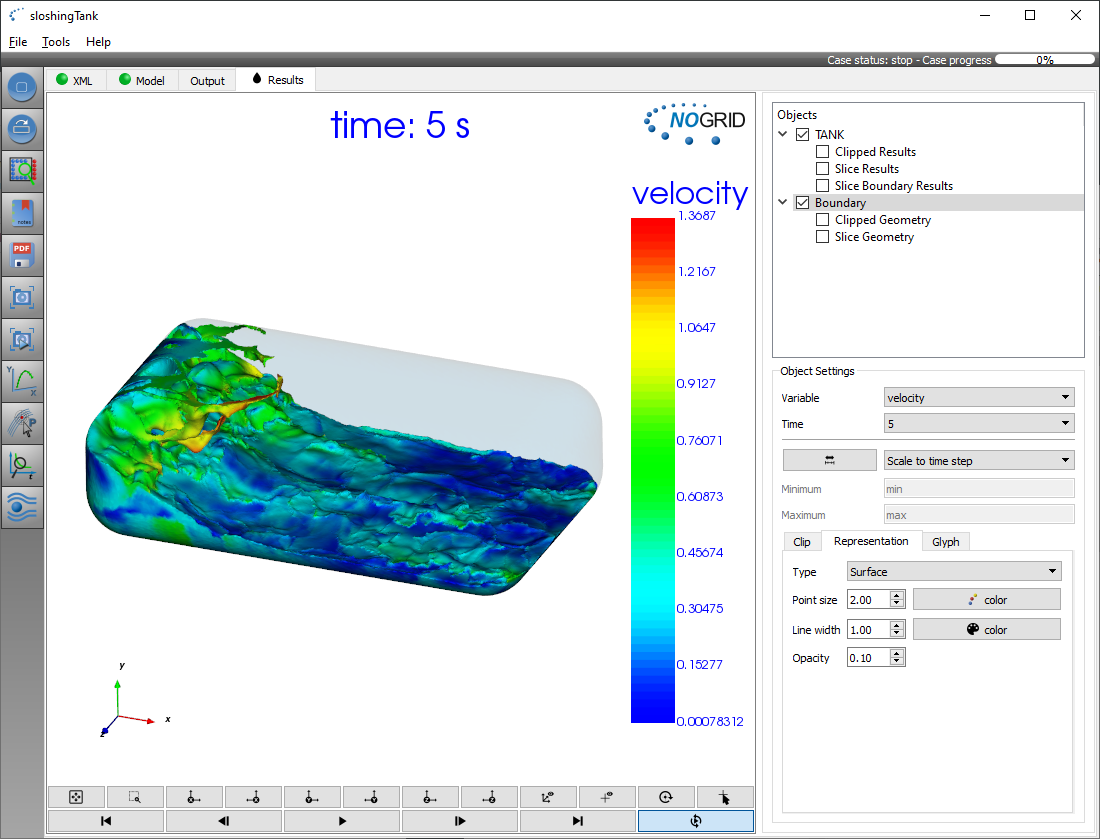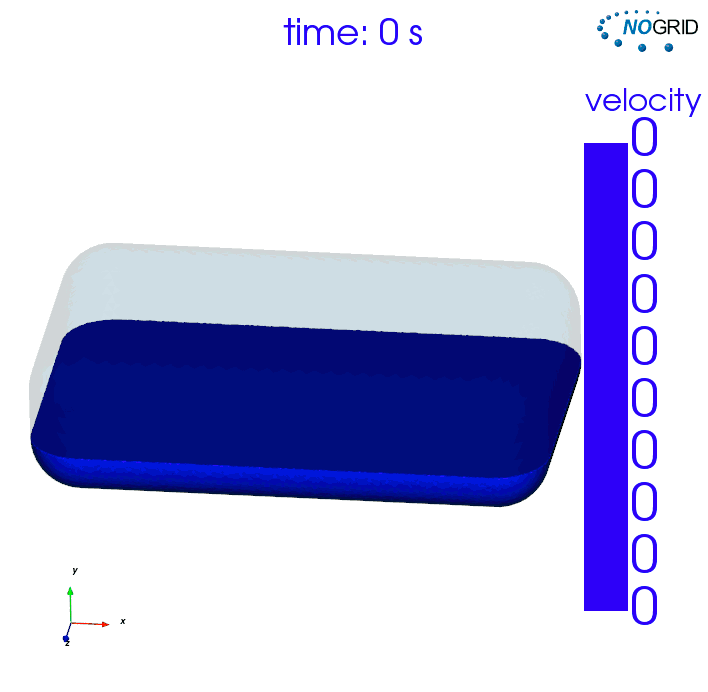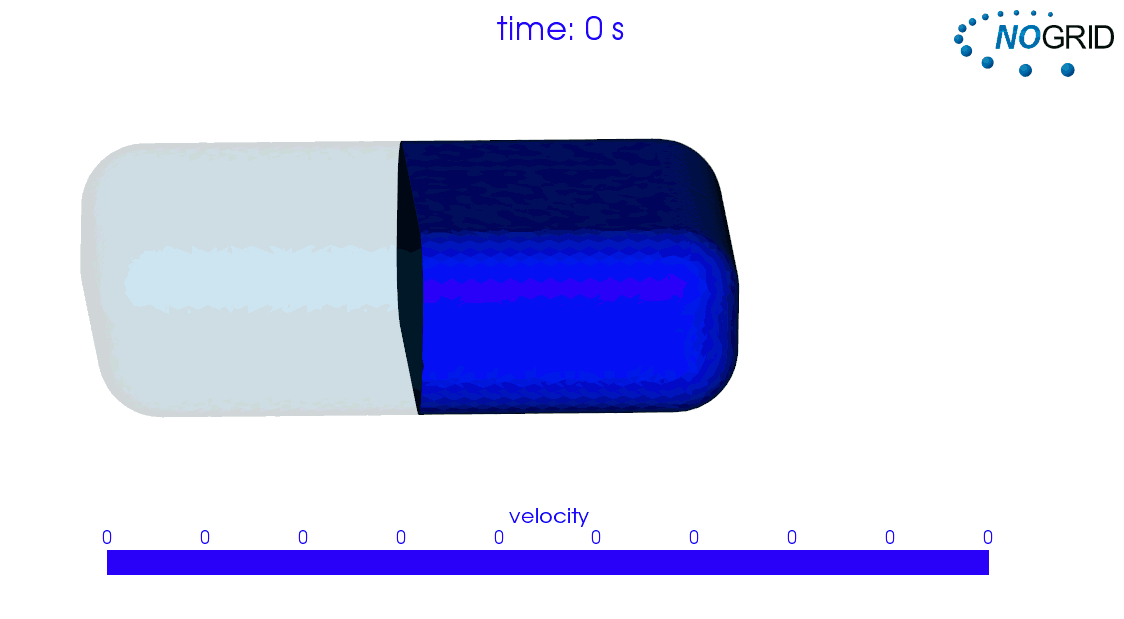Simulation Tank Sloshing
Tank sloshing simulation demonstrates the FSI capabilities of NOGRID points CFD software
Simulation of tank sloshing is one of the many applications that highlight the Fluid Structure Interaction (FSI) capabilities of the NOGRID points software. In this case study we present the 3D simulation of the tank sloshing process. In case A, the tank is subjected to external oscillations. In case B, the tank behaves like a rigid body that dynamically responds to the internal fluid motion. Here, the movement of the entire tank including the fluid, is computed. The tank movement takes place due to the flow inside the tank (for case B see Figure 5).
Rigid body simulation
Rigid Body Simulation (RBS) involves simulating the transient movement of rigid bodies. Rigid body mechanics deals with physical objects that do not deform. During the simulation, the rigid body can move, but its shape or structure remain constant. Various types of forces - such as gravity, magnetic forces, and friction - can act on the rigid body, causing it to accelerate and altering its translationals and rotational velocities. In addition, collisions between the rigid bodies may occur, leading to sudden changes in both translational and rotational speeds of the objects involved.
Fluid-rigid body interaction
The fluid-rigid body interaction (the tank and the fluid inside) simulated in this case study is solved fully coupled with the Lagrangian method. "Fully coupled" means that the motion (translation and rotation) of the rigid body and the fluid variables for velocity and pressure are solved simultaneously within a single large solution matrix - eliminating the need for iterative exchange between the solution variables. In engineering, Fluid-Structure-Interaction (FSI) refers to the consideration of the mutual influence of moving, not necessarily rigid bodies and a flow. Such interactions between fluid flow and bodies occur in many physical applications. Here, flow inside a rigid body causes both displacement and rotation of that body due to the forces and torques exerted on the body by the fluid. Conversely, the movement of the body causes changes in the flow. So, if the flow also changes, there is a so-called real, two-sided fluid-rigid-body coupling. If several rigid bodies are involved, the movement of one body can of course also be influenced by collisions with other bodies.
As shown in Figure 5 the sloshing tank has its own weight and moment of inertia. This means the tank responds to the forces exerted on it by the fluid. Conversely, of course, the flow is also affected by the tank's motion. For example, after the first wave, the tank begins to move in one direction, and this motion slows down the fluid flow due to the conservation of momentum - effectively damping the wave motion.
This model can serve as basis for more complex structures and will give you a better understanding of the fluid structure coupling, helping to improve your design regarding efficiency and costs.
FSI simulation with NOGRID points
NOGRID points can be perfectly used for designing and problem solving for all kinds of FSI processes. It enables accurate prediction of both body movement and flow patterns. NOGRID points helps to understand the flow by visualization of the mass, momentum, and rigid body movements. You receive transient quantities which you can use to analyze and evaluate the FSI process efficiency.
NOGRID combines powerful capabilities for handling FSI challenges and allows the simulation of any conceivable geometry and operating mode, such as
- fully 3D computation solving the complete Navier-Stokes equations
- easy and intuitive setup also for FSI (Fluid-Structure-Interaction) cases
- freely definable material properties by equations or curves
- evaluation of chemical reactions and corresponding heat source terms
- open or closed domains, including inflow and outflow areas (non-batch mode)
- moving of parts
Nogrid's strengths
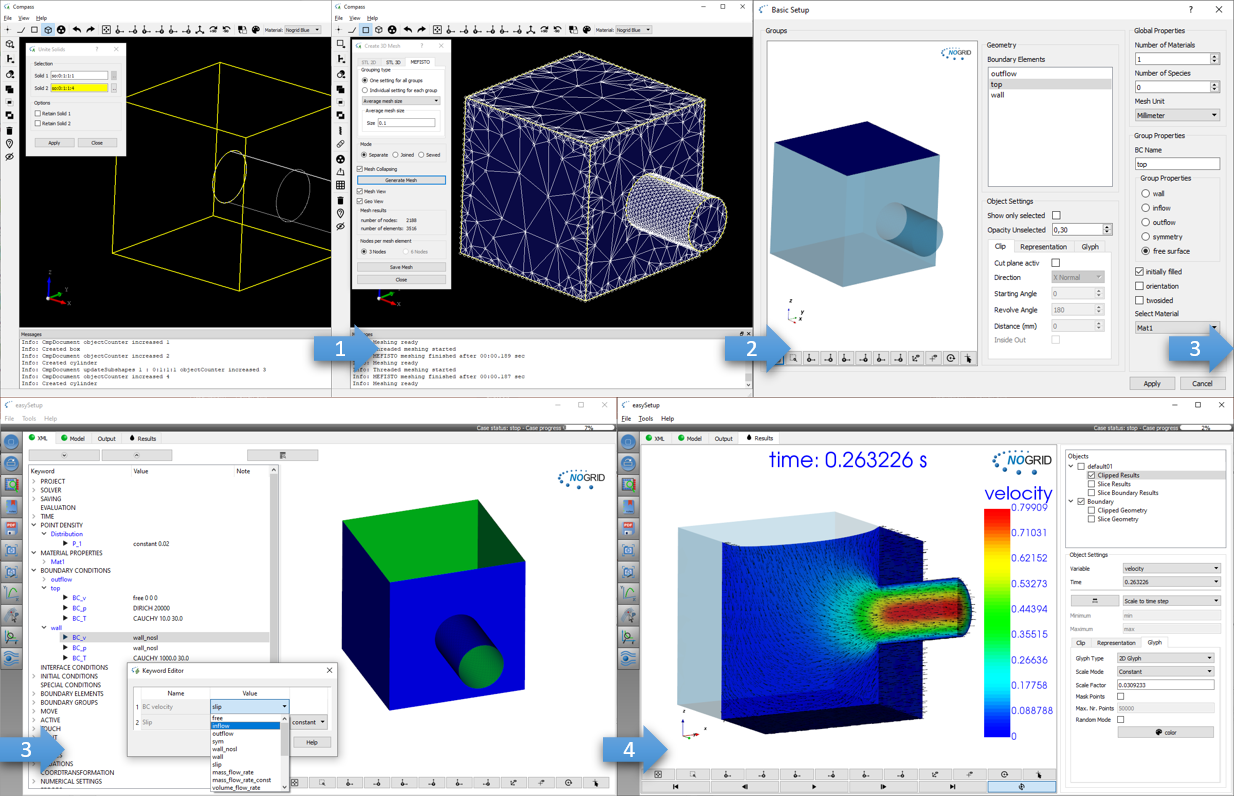
Easy and fast modelling: Build geometry, mesh boundary, setup the case and start computation
What is CFD from NOGRID?
CFD solves the fundamental equations that define the fluid flow process. With CFD software from NOGRID every engineer makes better decisions by predicting, analyzing and controlling fluid flow, heat and mass transfer or chemical reaction. By using NOGRID software for flow modeling you receive information on essential flow characteristics as for example flow distribution. Using it additional to testing and experimentation NOGRID software helps to improve the evaluation of your design – resulting in better construction and operation parameters, increasing planning security and money savings due to faster time to the marketplace for your product or process.
Choose NOGRID
With NOGRID, you choose professional CFD software and services – our aim is helping you to be successful. When you decide to work with NOGRID you choose close cooperation with a dynamic, flat hierarchies-organization. Short information channels result in quick and accurate professional support and service. Our team consists of highly qualified employees, who are experts in fields such as numerical simulation or computational fluid dynamics. Based on our know-how, we are pleased to offer the following services, responding to your individual requirements:
TRAINING
In our two-days training courses you will learn, how to use NOGRID CFD software efficiently. Our technical support team will teach you how to handle and solve different cases.
For more details please refer to Training Courses →
Technical Support
We offer full professional support from the minute you start using our software, by telephone or by email. Contact us, when ever needed.
For more details please refer to Software Support →
Service
Lack of time or resources and other constraints often make outsourcing an attractive solution. We help you with your flow modeling needs. Based on our engineering expertise in this field we offer individual numerical simulation services matching the unique needs of your organization.
For more details please refer to Simulation Services →
About Us
Simulation Software from Nogrid
Follow Us:

